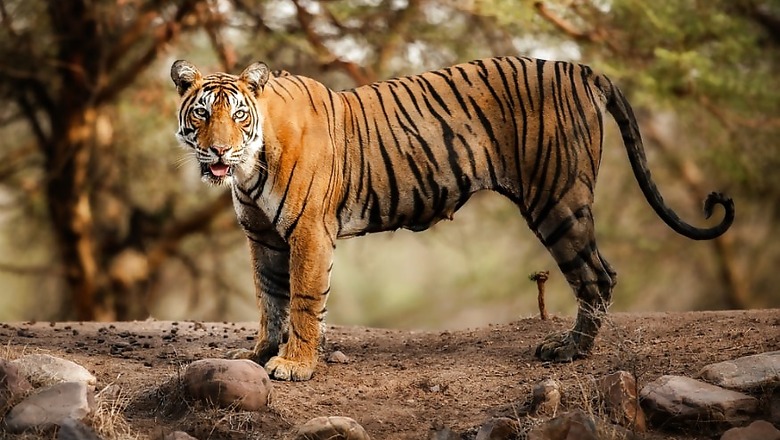
views
New Delhi: To ensure infrastructure projects don’t run wild over precious fauna, the National Tiger Conservation Authority (NTCA) – the statutory body in-charge of Project Tiger – has formed monitoring committees to review and examine compliance of conditions laid down during clearances, in over 100 projects across 16 states.
The National Board for Wildlife (NBWL), a statutory body under the union environment ministry, vets developmental projects situated in and around national parks, tiger reserves and wildlife sanctuaries, and grants wildlife clearances. Often, the NBWL seeks views of the NTCA on such projects as the Wildlife Protection Act, 1972 mandates their scrutiny.
According to the NTCA’s memorandum on the issue, accessed by News18.com, the committees will be headed by seven retired Indian Forest Service officers. They have been assigned the task of examining compliance of conditions and mitigation measures recommended by the NTCA and have to submit a report to the authority after three months. To begin with, the committees will examine compliance of projects cleared between 2016 and 2018.
Conditions apply
A list of 109 projects, on which the NTCA provided its views or recommendations, has been provided to the committees. An analysis by News18.com showed that of these projects, the NTCA recommended significant conditions in 30, most of them situated in protected areas. These 30 comprise railway expansion projects, erection of transmission lines or power line corridors, irrigation projects, the Ken-Betwa river interlinking project and road expansion projects.
In Madhya Pradesh, the NBWL had cleared two railway expansion projects. One was the construction of a third railway line through Ratapani wildlife sanctuary on the Bhopal-Itarsi route and the second was doubling of the Katni-Singrauli railway line, crucial for the coal sector. In both projects, the NTCA and state wildlife authorities imposed a slew of conditions. Key among them were construction of underpasses and overpasses to facilitate safe movement for animals. Many leopards and tigers have died on the line inside Ratapani sanctuary after getting mowed down by trains.
In the Bhadra Tiger Reserve, Karnataka, the upper Bhadra lift irrigation project was granted wildlife clearance in June 2017. The project was sanctioned on the condition that culverts, bridges over canals and underground piping will be constructed to prevent drowning of tigers, elephants, leopards and herbivores.
In some cases, the NTCA has ordered the project authorities to deposit a certain percentage of the project cost to fund wildlife conservation and, in other cases, it has also asked state governments to augment the area of national parks.
Presently, only one project in the country has seen construction of such wildlife passages. Following court battles, expert studies and petitions from conservationists, the National Highways Authority of India has built nine wildlife underpasses along national highway 44 (previously known as NH-7) in Nagpur district of Maharashtra. These underpasses were pushed as the highway was widened through the tiger corridor connecting the Kanha and Pench reserves, considered one of the most important migratory paths in the country for the big cats.
Threat of linear infrastructure
NTCA officials said they have chosen the period 2016-2018 to begin with because it was in 2016 that the environment ministry came out with a policy document on putting in safeguards for wildlife while clearing infrastructure projects. “There was a discussion within the ministry on this issue and it was felt that since projects are being expedited on the basis of these safeguards, their compliance, too, needs to be examined,” said an NTCA official on the condition of anonymity.
In December 2016, looking at the threat of linear infrastructure such as railways, roadways, transmission lines and canals on wildlife, the union environment ministry had brought out a policy document. This document, titled ‘eco-friendly measures to mitigate impacts of linear infrastructure on wildlife’, detailed the safeguards that ought to be recommended while granting wildlife clearance to infrastructure projects. Major roads including national highways, state highways and roads of the Public Works Department traverse as many as 26 tiger reserves, the document said.
The policy document detailed the most suitable structures for a variety of wildlife, ranging from big carnivores and mammals such as tigers, leopards and elephants to ones that could be built for reptiles, birds and arboreal animals such as monkeys.
According to a Wildlife Institute of India study of the underpasses on NH-44, a total 465 photos of medium-large carnivores including golden jackal, leopard, tiger, sloth bear and wild dog have been captured on camera traps while crossing the road. Also, 663 photos of small mammal species such as jungle cat, mongoose, common palm civet, small Indian civet, Indian hare, rusty-spotted cat and Indian porcupine were captured while they were using the underpass.



















Comments
0 comment